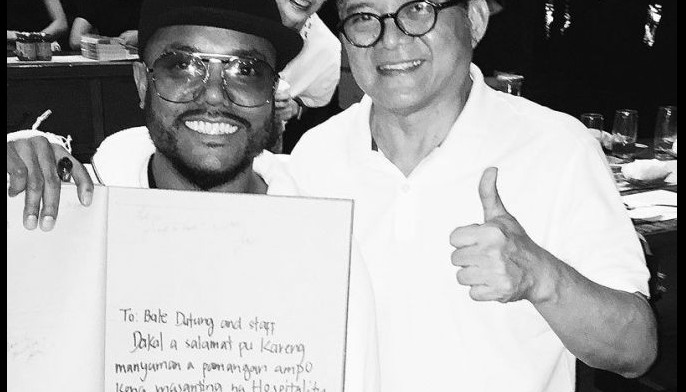DSWD, WFP partner in rice for livelihood program
ALEOSAN, North Cotabato, Philippines — As part of ongoing efforts to address the early recovery needs of former internally displaced persons (IDP) in Central Mindanao, the Department of Social Welfare and Development (DSWD) is expanding its partnership with the United Nations World Food Program (WFP) by committing to provide WFP with some 18,800 tons of iron-fortified rice for approximately 106,000 food-insecure families in Maguindanao, North Cotabato, Lanao del Norte, Lanao del Sur, and Sultan Kudarat.
“We engaged the support of WFP for the implementation of early recovery activities in line with DSWD’s continuing comprehensive program of assistance to IDP-returnee populations due to the agency’s proven capacity and experience in carrying out similar food-based activities,” said DSWD Secretary Corazon Soliman.
“WFP has an on-going Food-for-Assets program in Central Mindanao and was able to successfully replicate similar programs for typhoon-affected families in Northern Luzon after Ondoy in 2009,” she added.
Targeted food-insecure people in return areas that were affected by the 2008/9 upsurge in armed conflict receive a rice incentive for their participation in community-designed livelihood strengthening activities, which typically include support to sustainable crop and fisheries production, building flood control dykes, rehabilitation of irrigation canals, communal gardening, women’s rope making and mat-weaving activities.
These small-scale activities enable communities to become progressively self-sufficient through rebuilding and rehabilitating important community assets and developing livelihood skills that allow them to diversify income earning opportunities.
“WFP is extremely grateful and encouraged by this unprecedented pledge of support by the DSWD which will also serve as a basis to integrate with other longer-term social protection programs that are critically needed in the conflict-affected areas of Mindanao,” said WFP country director and representative Stephen Anderson.
“The fact that DSWD will be supplying iron-fortified rice is also of particular significance because of the added nutritional value it gives to beneficiaries. Iron-fortified rice will help prevent the prevalence of iron deficiency anaemia (IDA), which is a serious public health concern in the region.”
“Distributing iron-fortified rice to targeted vulnerable populations engaged in livelihood enhancing activities will also help foster healthier communities,” echoed Soliman.
“The rice grains may look slightly different from what we’re used to, but the rice tastes the same and it is actually better for our health. I like it, and what’s more I know it’s good for me!” said WFP National Ambassador Against Hunger KC Concepcion after eating an iron-fortified rice meal with WFP-supported food-for-work beneficiaries in Aleosan.
“We really want to do our best to make a difference in the communities where we work. Apart from the tangible benefits of food-for-work projects, this iron-fortified rice also strengthens people’s bodies. That is why WFP is introducing iron-fortified rice into projects here,” she said.
Iron-fortified rice is made from a blend of polished rice grains and pre-mixed iron-fortified rice grains which may have a slightly brown color. In addition to preventing IDA, consumption of iron-fortified rice helps the body to boost production of healthy red blood cells, improves physical and mental performance and enhances immunity against infection.
With a 19.5 percent prevalence rate across all age groups in the Philippines, IDA is a major public health concern. According to the 2008 National Nutrition Survey conducted by the Food and Nutrition Research Institute, 55.7 percent of infants six to 12 months old suffer from IDA, as do 42.5 percent of pregnant women.
The Autonomous Region in Muslim Mindanao is the most IDA-affected region with a prevalence rate of 22.7 percent among children aged six months to five years and 47.3 percent among pregnant women.
- Latest




























